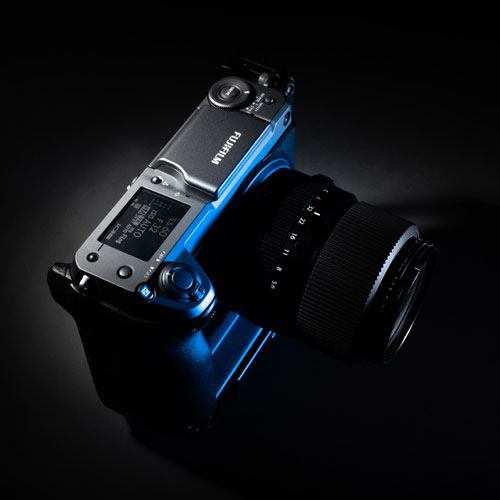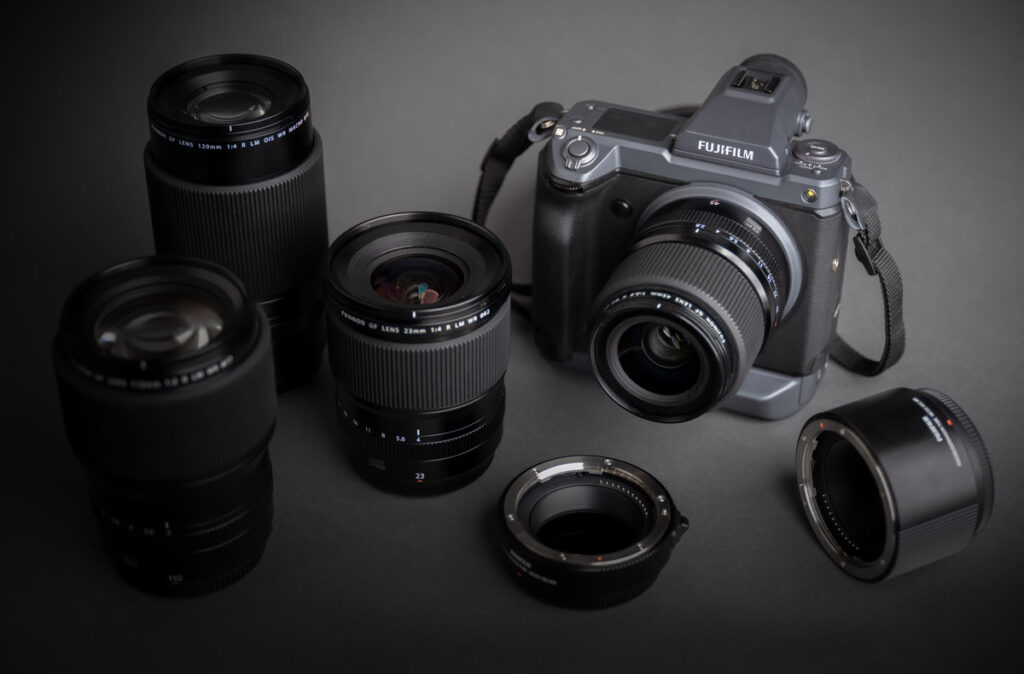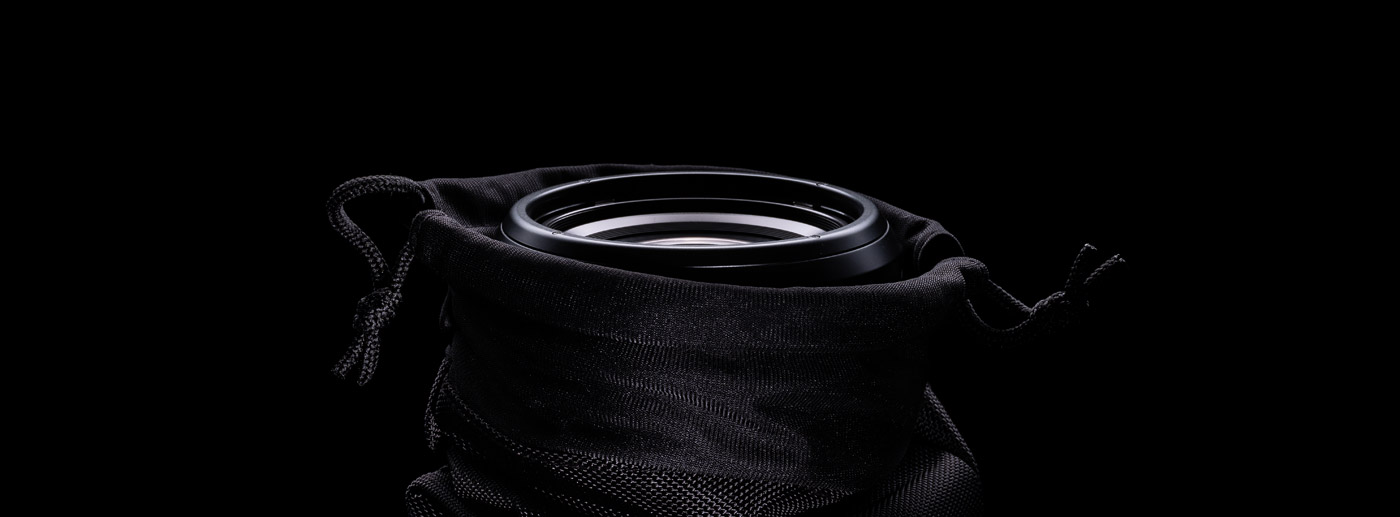
flagship DIGITAL MEDIUM FORMAT
FUJIFILM GFX100
- PUBLISHED: April 2021
intro
I entered the world of photography through the gates of Canon equipment. My choice was primarily influenced by my dad. He shoots Canon and this way I can borrow some of his equipment and lenses. My Canon gear served me well for the best part of 15 years; but my last camera body purchase, EOS 5D MKII, was more than 11 years ago. It was time for an upgrade. I wanted a significant upgrade. Image quality was my primary aim. I wanted a camera that produced the best files, colors, and dynamic range. After thorough consideration, and consultation with photography friends, I decided to venture into the world of Fujifilm; specifically their medium-format range, the GFX System.
First Impressions
Obviously switching between camera brands is not a simple thing. Of course RAW files and images may feel different, but more importantly, the equipment itself is different. How to handle the camera body, how to navigate menus, and how to adjust exposures can feel very alien. Luckly for me, one year before my GFX purchase, I bought a fujifilm X100F digital compact. It loved the layout and got very comfortable using the camera. I was especially fond of the retro-styled dials that are signature fujifilm.
To my shock, fujifilm opted against using their signature layout and design in their “flashship” product; the GFX100. A very strange industrial engineering choice I must say. the GFX100 has the traditional fujifilm menus and interface, many of the traditional fujifilm buttons, but not the two top dials.
The camera is obviously larger than most mainstream DSLRs and Mirrorless cameras. It is slightly on the heavy side too. However, it feels very well designed in terms of ergonomics. It provides a secure grip in both horizontal and vertical orientations. Some of the buttons are however frustratingly small.

specifications
SENSOR TYPE
CMOS w/ bayer filter
SENSOR SIZE
43.8mm x 32.9mm (Medium Format)
IMAGE RESOLUTION
11648 x 8736 (102MP)
FILE FORMAT
JPEG, RAW (14bit, 16bit), TIFF (16bit)
LENS MOUNT
Fujifilm G-mount
ISO RANGE
Native: ISO100-12800 , Extended: ISO50-102400
IMAGE STABILIZATION
IBIS (5-Axis sensor shift)
AUTO FOCUS
TTL Contrast / TTL Phase Detection Hybrid AF
REAR LCD
3.2" three-direction tilt touch screen color LCD
SUB LCD
1.8" Monochrome LCD
REAR SUB LCD
2.05" Monochrome OLED
VIEW FINDER
5.76M-dots OLED EVF
VIDEO FORMAT
MOV (MPEG-4 AVC / H.264, HEVC / H.265)
VIDEO RECORDING
DCI4K / 4K (30p, 25p, 24p) , FHD (60p, 50p, 30p, 25p, 24p)
my gfx gear
gfx100 mirrorless medium format (SPECS above)
gfx50s mirrorless medium format (BACK UP)
gf 23mm f/4 lm wr
gf 45mm f/2.8 r wr
gf 80mm f/1.7 r wr
gf 110mm f/2 r lm wr
gf 120mm f/4 r lm ois wr macro
gf 45-100mm f/4 r lm ois wr
mcex-18g wr
mcex45g wr
metabones ef to gfx smart adapter

3rd party support and accessories
Unlike mainstream offerings from Canon, Nikon, or Sony (and to some extent Fujifilm’s X-series), the GFX system has very little 3rd party support in terms of lenses and accessories. There are very few non-fujifilm G-mount lenses on the market. Adaptors do exist for those who want to utilize some of their existing glass. I purchased an adaptor (Metabones EF-GFX Smart Adapter) to connect my existing EF lenses from Canon on the GFX100. The adaptor works great, autofocus is reliable and accurate, but AF speed is slightly slow compared to native G-mount lenses from Fujifilm.
ON THE FIELD
The GFX100 produce some of the best RAW files anywhere. The files, although very large in size, are rich in detail, color, and preserve incredibly wide dynamic ranges. Auto-focus is fast enough for most subjects, except extreme sports; where you will struggle to track subjects a little and your hit-rate will suffer quite a bit. I’m nost saying the GFX100 cannot do action sports, but It is certainly not on par with latest mirrorless offerings from Sony or Canon.
Weather sealing on both the GFX100 body, and GF lenses, is solid and will withstand the harshest of environments. IBIS works very well, and if you end up purchasing any of the OIS (Optical Imaging Stabilization) lenses, the outcome is even better. I have shot tack-sharp images handheld at 1/15s using the GFX100 and GF45-100mm OIS lens.
Battery life is average. It is not the best on the market, and certainly not the worst. Since the GFX100 natively takes two batteries; it can easily last you a good day’s worth of shooting (roughtly 300 to 400 images)

impressions
THE GOOD
Image quality of the entire GFX lineup is second to none. The sensors capture the finest detail, the smoothest gradients, and have standard-setting dynamic range that you'll struggle to find anywhere else.
The GF lenses are some of the finest in the market. They are razer sharp, corner to corner. Resolution, color rendition, and contrast are as good as it gets.
RAW files are so rich and can be pushed farther than most cameras; Fujifilm film simulations are also a great touch.
The OLED EVF is bright, clear, and accurate with minimal lag.
The side and vertical grips are very well designed. They feel comfortable and provide a secure assuring grip of the camera.
THE BAD
First and foremost, price. This is a premium lineup and will set you back many thousands of dollars more than the most full-frame offerings available in today's market.
Auto-Focus speed, as well as face/eye detection, is certainly not on par with today's best-selling mirrorless cameras.
Weight/Size are certainly not something to ignore. This is a beefy imaging system that be an issue after many hours shooting in the field.
RAW files are massive in size. They are easily 200MBs each; an investment high-capacity memory cards, large stogare archives, and a high-end computer are quite necessary.
Button layout can be an issue. Yes most buttons are 100% customizable; but the classic fujifilm signature dials are not present on the GFX100. Instead, they are replaced with a combination of digital screens and buttons (some of which are frustratingly small).
THE BOTTOM LINE
If today's top-selling mirrorless cameras are Ferraris, this is a Rolls Royce. This is not meant for speed; it's meant for a more mindful type of shooting. It's pricey and heavy, but if image quality, large prints, or cropping freedom is important to you, then this is the system for you. The files generated are rich and quite frankly the best I've ever seen.
sample gallery

